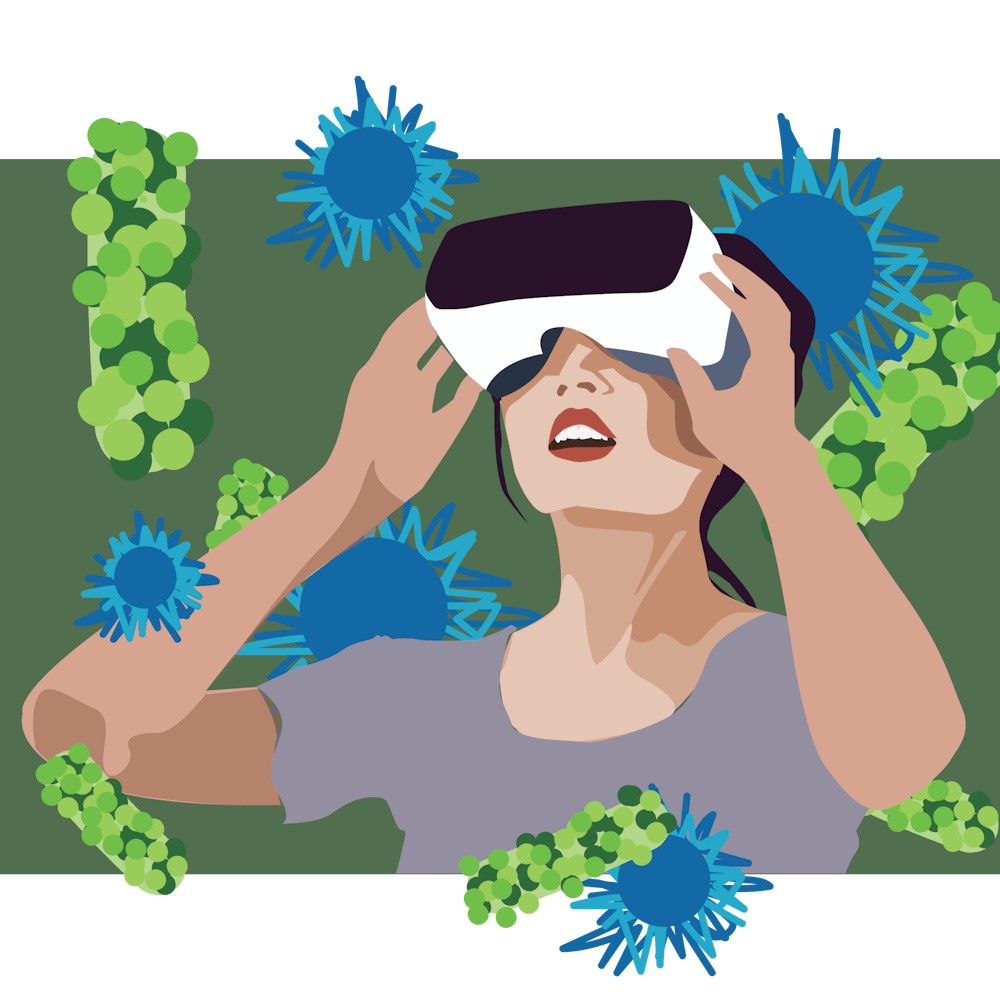Virtual reality is a rapidly growing field, continuously expanding into new subject matters. Recently, VR has started being used for educational purposes.
Earlier this year, a University-based project "Infectious Disease in 3D" received a grant from the Jefferson Trust to create a virtual reality program that could be implemented within University classrooms. The group received a grant for $99,945, and the grant will allow for the program to be used in University classrooms to help students learn about complex biological processes.
The project director, Jennifer Guler, an assistant professor in the biology department, teaches infectious disease at the University. Arin Bennett works in the Scholars’ Lab of the Robertson Media Center and serves as the visualization specialist for the project.
"An opportunity came about through the Jefferson Trust to apply to enrich the education of undergraduates at U.Va.," Guler said. "[Arin Bennett and I] had this idea to run an internship program using virtual reality. To educate people about infectious disease-related topics."
Once completed, the project will be available in the RMC on the third floor of Clemons Library. There are two public virtual reality headsets for any students interested in exploring virtual reality as well as a variety of programs to use with headsets, and the recent project will become one of them.
"We are building all this in Unity 3D, which is a game engine," Bennett said. "And one of the powerful things about Unity is that you can export to a variety of platforms. So all this work that we're doing right can be exported out to Windows to Mac to iPhone, Android, PlayStation and VR. So the content will be used and reused. And we're trying to maintain that air of getting it out to as many platforms as possible."
A goal of the project is to make it accessible to many different groups of people. The team wants the project to be utilized by as many people as possible. Michelle Warthan serves as project coordinator and had a background in animation and art prior to working on the project.
"I think there's an emphasis on making sure that this is open source," Warthan said. "It's not only going to be available to students, colleges and primary schools but also just to the public. So that's really something to bring awareness to certain topics."
Over the summer, the first cohort of student creators was given instruction about infectious diseases, animation and virtual reality. The group then worked on creating their virtual reality museum.
"It's been really cool to see how you can make something that's real life come together in virtual reality and see it in that realm," said Lindsey Manning, a third-year Engineering student and student creator. "And when we were getting introduced all the technology, we went over to Clemons and got to look at all the different games and software they had for virtual reality, which was so cool to me. And it felt like real life, and that's what I think would be really cool to be able to teach the public about a topic that they might not know much about, but it feels like real life to them.”
Currently, the project is focusing on antibiotic resistance, which is the process of bacteria becoming more resistant to antibiotics, thus making them harder to treat. Although other topics may be explored in the future. The group chose to focus on antibiotic resistance because of its growing prevalence. A review by the UK Department of Health predicts that 300 million people will die from antibiotic resistance by 2050.
"The project that we're doing for it right now is kind of looking at antibiotic resistance in various settings," said Peyton Billips, a fourth-year Engineering student and student creator. "So the two that we're working on right now are antibiotic resistance in a farm location, and within animal products and crops. And the second one is looking at a hospital setting. So seeing how antibiotic resistance can form there and spread from there."
Since this is the first year of the project, the group had some developmental freedom. The first cohort of student creators was able to choose the topic of antibiotic resistance and work to design how they wanted the program to look and function.
Over the summer the group worked on the development of the project. The students learned how to use the software and started to plan what they wanted the project to look like.
“We're building the models and doing the textures of everything and starting to put everything into Unity, which is the VR space,” said Emily Puleo, a third-year Engineering student and student creator. “So it's pretty much the building stages right now. Trying to like construct all the pieces that we're going to need."
The group looks forward to what this type of software can offer to both the University community and globally. The project may be able to teach different groups about infectious disease, or for this specific part of the project, antibiotic resistance. Guler expects that she will be able to use the project in her classroom but is also looking at how this type of project can be used worldwide.
"A lot of the topics that we focus on for infectious disease are not necessarily something that's relevant here in America,” Guler said. “We don't suffer from malaria, or we don't have Ebola here, things like that. But getting people in those countries who deal with these things on a day-to-day basis access to this information in a new and fun way.“







